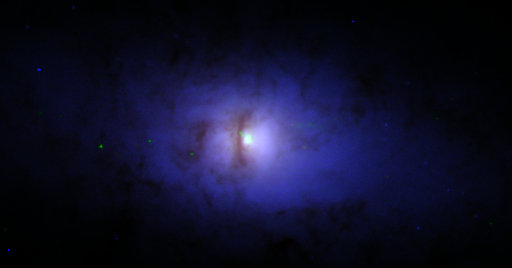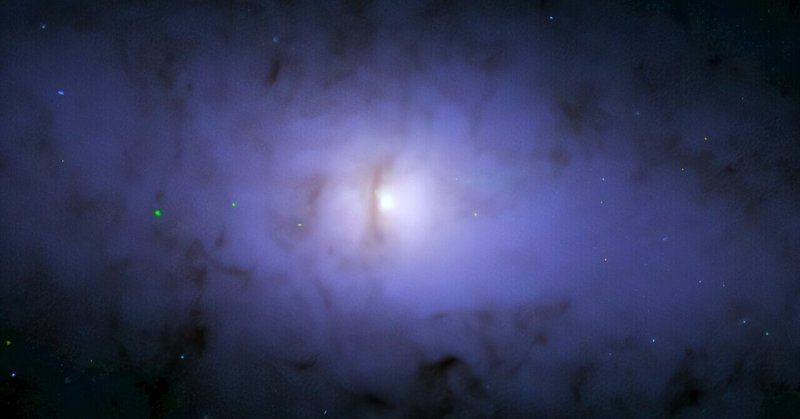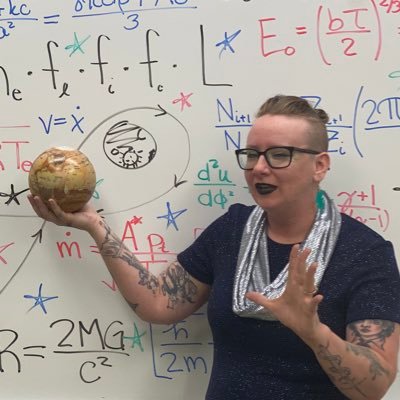
Alejandro S. Borlaff
@asborlaff
Followers
3K
Following
5K
Media
905
Statuses
6K
Investigador en @NASA. Astrofísico. Desarrollando telescopios espaciales en @NASAAmes. Galaxies and rocket science. @ESA @unicomplutense @IAC_astrofisica.
NASA Ames Research Center, CA
Joined November 2014
I am extremely proud to announce that our ROSALIA project (ROman Sky Analyst for LSB Imaging & Astronomy) has been selected as one of the NASA/ROSES @NASARoman Wide Field Science awards. We will prepare #Roman to unveil darkest regions of the Universe from @NASAAmes.
2
6
53
RT @AAS_Press: NASA: "Sideways" Black Hole Found Using Legacy Data, New Techniques
nasa.gov
NASA researchers have discovered a perplexing case of a black hole that appears to be “tipped over,” rotating in an unexpected direction relative to the
0
3
0
RT @physorg_com: #NASA's advanced techniques unveil a black hole in galaxy NGC 5084, rotating at a 90-degree angle to its galaxy. This disc….
phys.org
NASA researchers have discovered a perplexing case of a black hole that appears to be "tipped over," rotating in an unexpected direction relative to the galaxy surrounding it. That galaxy, called NGC...
0
4
0
RT @astro_jaz: nasa found a sideways black hole using old hubble and chandra data along with new image analysis techniques!!! . THIS IS SO….
0
72
0
RT @NASA: Our researchers have found a sideways secret: a “tipped over” black hole in a galaxy!. The dark vertical line at the center of t….
0
592
0
RT @NASA_es: @NASAUniverse @NASAHubble @chandraxray @NASAAmes El método que revela las características inesperadas de la galaxia NGC 5084 f….
0
7
0
RT @NASA_es: @NASAUniverse @NASAHubble @chandraxray @NASAAmes Este descubrimiento fue posible gracias a datos de archivo de @NASAHubble y @….
0
4
0
Espectacular ver nuestro trabajo en publicado en español por @NASA_es 🇪🇦🇺🇲. Hemos encontrado un extraño patrón de rayos X en la galaxia NGC5084. ¿La causa? Posiblemente un agujero negro supermasivo que ha girado sobre su eje, apuntando su jet hacia el plano de la galaxia 🌀🛰.
Un agujero negro desconcertante . Científicos de @NASAUniverse han descubierto un agujero negro que parece estar “de lado”, y que gira en una dirección inesperada con relación a la galaxia que lo rodea, NGC 5084:
0
4
10
@NASA @chandraxray @MAST_News This paper is the peak of three years of work with our colleagues at @NASAAmes, @smithsonian , @KIPAC1, @caltechipac, @stsci, @nmsu, @TheNRAO and @USRAedu, published in The Astrophysical Journal and made available here for everyone here: .
0
0
1
NGC 5084 is the first of many special galaxies to come. Combining multi-wavelength data from X-ray to radio, including optical and infrared is the key to unveil the mysteries of the Universe. This is possible thanks to @NASA public archives like @chandraxray and @MAST_News
1
0
1
@chandraxray @ApachePointObs There were two options left: .1 - Either the supermassive black hole X-ray jet "flipped" recently from vertical to horizontal orientation, or . 2 - The galaxy is essentially a pressure cooker of black hole super-heated gas that is bursting on its poles. NGC 5084 is very unique!
1
0
1
@chandraxray However, all the X-ray emission could be just a supernovae burst. How do we know if the responsible was the supermassive black hole or them? . Our friends at @ApachePointObs in New Mexico came to the rescue. No new stars have been born in the core of NGC5084 in the past Gyrs.
1
0
0
@chandraxray ALMA and Hubble told the other side of the story. There was a gas disk rotating at 250 km/s at only 150 parsecs from the center. To make things rotate that fast, there has to be a supermassive black hole at least 46 millon times heavier than the Sun in the center of NGC 5084.
1
0
0
New processing methods applied to archival @chandraxray observations, helped us to find a extremely large (17 kpc) emission of hot gas bursting above and below the galactic disk of NGC 5084, a extremely massive lenticular galaxy.
1
0
1
Today we release the discovery of a strange cross-shape X-ray emission in the supermassive galaxy NGC 5084. Combining observations from @chandraxray, @NASAHubble, @almaobs, @TheNRAO VLA, and @ApachePointObs, we discovered that this galaxy recently had a galactic collision.
Black hole spotted at an unusual angle. @NASA scientists have discovered a 'sideways' black hole using archival data from Hubble Space Telescope and Chandra X-ray Observatory as well as new image analysis techniques.
2
1
10
RT @toomanyspectra: i’m sorry but who is getting paid to try to hawk gen AI to NASA bc this is just sad to read
0
9
0


















